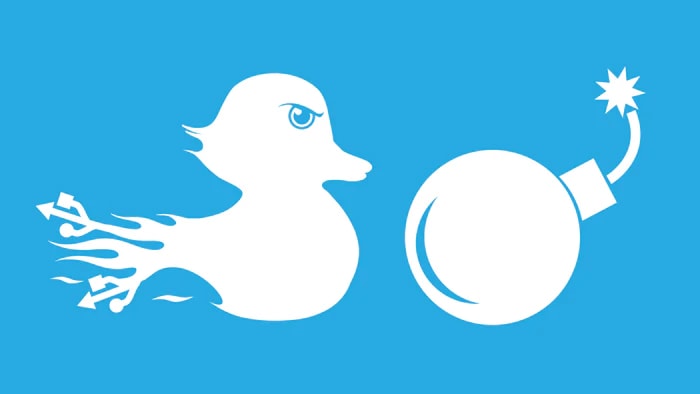Freelance Notes
Notes from Jamie Brindles Book
Chapter 1: The Surplus Mindset
- In freelancing the process of finding clients is science not art, never make short-sighted decisions based on fear for not finding clients, everyday 10 million businesses are launched,, and a freelancer can live comfortably with 5 clients.
Chapter 2: Choosing Your Industry
- At the tart settle into a specific industry (niche) by settling into a niche you do 2 things.
- 1) Focusing your lead generation efforts
-
2) Hacking word to mouth growth
-
For a focused laed generation use your portfolio as a tool clients use your portfolio to iamgine what their end product will look like.
-
By choosing a niche you get a pool of clients to compete for, if you dont, you will be constantly hoping for a bite in a big ocean.
Chapter 3: Building Your Tool Box
-
Before you start building a clientbase, get your toolbox in order and it is portfilo!!!
-
Remember the portfolio exists to help the client imagine what's possible, not to demonstrate how many clients you have worked with.
-
Once a portfolio is complete have a process of your work ready so that the client knows which part she is at.
regardless of industry an effective process has 3 stages - 1 - Pre production - 2 - Production - 3 - Post Production
-
Pre-production (disovery - asset approval - rough outlines)
-
Production (craetion - revision)
-
Post-production (finalization, deployment, maintanence)
Chapter 4: Pricing
-
There are 4 methods to charge your clients
-
1 - Transactional Pricing - used in retail stores, a product thats same for everyone and has a set price.
- 2 - Flat Free Pricing - An all encompassing project fee for larger products and services. Flat fee keeps the account simple.
- 3 - Hourly Pricing - Lawyers and accountants often bill by the hour. Hourly is also used for post-production becnhmarks such as website maintanace.
-
4 - Metrics Based Pricing - Service provider takes a percentage of the revenue or paid based on hitting certtain metrics. P.S. dont use one method often combine at least two of them.
-
Your pricing depends on the companies ROI, if you deisgn a poster for a local business vs. design a poster for a blockbuster film the bill should not be same. It is the same work but the bill should not be the same.
-
For projects outside of hourly, use this formula
(overhead + value) x expertise = price
- overhead: any price you spend to keep your business running from rent to food to electricty
- value: calculate the worth of yourself and the value you will bring to the project.
- expertise: expertise takes into account of speed, effeciency, intuiton, network, tohught leadership, project management
Chapter 5: Lead Generation
- Once you setup everything, you need leads. There are three types of images.
- 1 - Cold lead (new leads)
- 2 - Warm lead (50% potential)
-
3 - Hot lead (100% potential)
-
Cold Leads - essentialy every customer is cold at some point. it is the hardest climb of three lead. They need to be aware of your product. cold leads are a numbers game. But there are three tricks to turn it into your favor.
- 1 - research
- 2 - venue
- 3 - split test
-
4 - follow up
-
Research - make sure you are targeting people who could benefit from your service
-
Venue - chose the right medium for outreach weather it is linkedin, subreddit, facebook, networking events ... etc.
-
Split test - Dont just compose one message, put together 7 - 10 variations, some short some lonfer use a different opening line each.
-
Follow up - It is very rare that you will get a response after initial reach. Follow up in 10 days and if still no response follow up on 10 days again. Limit is 2. Never break because it hurts your brand name.
-
Warm Leads - warm leads are looking for your service but not actively looking for you. You will find these through upwork and job sites or your own site with SEO and marketing
warm leads is all about standing from the crowd. Focus onL - social proof - the profile - the pitch
-
Social Proof - The more positive reviews more clients you will have. Your first job on the site is to bid lower prices to get 10 good positive reviews.
-
Profile - Your profile on a site such as upwork or your own client is your shop window, make sure it is got fantastic curb appeal take a lot of your time on the about me section, make sure it is friendly and professional. discuss about how you work.
-
The Pitch - just like cold outreach, your pitch should be honed over time. a warm pitch should be quick. Your goal should be clear in two sentences.
- 1) Demonstrate your value(past clients/good reviews/succesful projects)
- 2) Address their priority
Always assess clients priortiy maybe it is rushness, maybe it is their inexperience.
- Hot leads will come a little further down the road, it usually comes from
- word of mouth
- referrals
- content marketing
- thought leadership
-
social media
-
Referrals are the main thing
-
Past Clients -> Ask for refferrals ("I am thinkin of frowing my business this year. Can you think of anyone in your circle that may need help? I'd appricate referrals"
-
Strategic Partnerships - These can double your business. Look out for other freelancers who can pass clients to you. Remember the competition freelancers will not pass clients.
-
Always reach out in 3 month periods
Chapter 6: Closing the Sale
-
Often the best communicator that hets hired not the best practioner. To achieve this 70%-80% percent of the call listening and asking thoughtful questions about their projects.
-
Identify the goal posts of the project, ask them how the sccess is measured, what are their priorities, is it schedule, budget, qualiry, metric ... etc.?
-
Then move onto the hurdels, why havent they done this now? What they wish have done differently always add suggestions?
-
while talking with clients always talk money on the phone, give them a bracket of price rather than a fixed cost. say something along the lines 5000$ to 7000$ dont just say it is going to be 5500$ dollars. You will usually get 4 responses:
- 1 - That sounds about right
- 2 - I taught it was going to be more
- 3 - Thats too expensive
-
4 - Lets aim for lower/higher number.
-
Respond to each with the following:
-
"That sounds about right" -- answer: great, in that case I will build out a production schedule and send for your approval. Does that sound like a plan?
-
'I tought it was going to be more": -- answer: if you have more room to spend we can add more features to build even more to use your budget to it's full potential for future outcome.
-
"thats too expensive": -- answer: ok thats, helpful, what was the budget you had set aside for this, we can try and back into a deliverable thats still top tier, but makes more sense forthat spend.
-
"Lets aim for the lower/higher figure" -- answer: sounds like a plan. I'll put together a production schedule anda scope of work that lands us on that side of the bracekt.
Chapter 7: Working with Clients
- There are two most important elements of a successfull client/freelancer relationship.
- 1 - The scope of work document
-
2 - The production schedule
-
Scope of Work (SOW) Document - in it you shuold outline the deliverables, how many revisions are included, assets to be provided by the client, and anything else that is discussed about the project. It should state that anything beyond the scope will include an overcharge.
-
Production Schedule - Guide to the dates on which each benchmark will be delievered at, the bariosu stages of the porject.
Chapter 9: Contracts and Billing
-
Contracts at the simplest should cover what is expected of the client. It should clear everything out.
-
Billing - Your payment shedule should be included in the contract.
-
Payment Structures
- 50% (at the start) 50% (at the final delievery)
- 33% (to start) - 33% (midpoint) - 33% (at final delivery)
- 50% (up front) - 20% (at becnhmark 1) - 20% (at becnhmark 2) - 10%(at final delivery)
- 100% (to start)
- Hourly (with cap)





